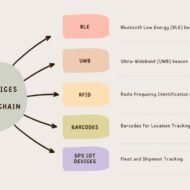Currently Browsing: Sales
Posted by Managementguru in E Commerce, How To
on Jul 14th, 2022 | 0 comments

SharePoint is an elaborate collaborative web-based platform designed to work with Microsoft Office applications and other related solutions. Fortunately, SharePoint is also an integrated solution for ecommerce platforms that use Microsoft’s ASP.NET framework. This means that teams in an ecommerce business heavily rely on SharePoint applications to collaborate. One of the tools in the environment is the SharePoint calendar. It allows sharing scheduling of events and tasks as well as communication through actions. One of the best things about SharePoint calendar is that you can sync it with Outlook calendars because they are both Microsoft products. This article will look at how to embed Outlook calendar into SharePoint for ease of operations as it helps teams to view all tasks in one dashboard and avoid a lot of unnecessary navigation. How to Add Outlook Calendar to SharePoint The first step is to create a new calendar in SharePoint, which you probably have if you have been using this solution. From here, you can navigate until you get an option to “sync to Outlook” and then allow. Sometimes, it appears as “connect to Outlook,” which is all the same. Complete Guide to Microsoft SharePoint Online To add Outlook calendar to SharePoint, you need to click the “allow” or “yes” button. Customizing the synchronization by choosing the files and libraries to be shared is also very important. So, ensure that it is done at this point in how to add Outlook calendar to SharePoint. Add Outlook Calendar to SharePoint Through Virto Calendar You can embed Outlook calendar into SharePoint. Virto Calendar is a web part for SharePoint and works perfectly with Office 365. The Virto Calendar settings will allow you to upload Outlook calendar to SharePoint. But you will have to go through an extra step of adding the emails of people you would like to share the calendar with to correctly add Outlook calendar to SharePoint. Likewise, you will give permission for what they will see and do with calendars by checking or unchecking the necessary boxes. How to Manage a Shared Outlook Calendar in SharePoint Whether you embed Outlook calendar into SharePoint directly or through an ecommerce platform, you will manage the calendars directly on SharePoint, which is easy. First, you will see all your activities on the Outlook calendar on your SharePoint dashboard. Depending on the permissions and rights that you possess, you can do quite a number of things to the calendar such as editing, adding new calendars, and deleting. Whatever you do on SharePoint will be reflected on the Outlook calendar when you embed Outlook calendar into SharePoint. Teams are given the right to manage these calendars during the time of sharing. Hence, the team leaders should ensure these rights are well issued to make operations as easy as possible. Benefits and Reasons to Embed Outlook Calendar into SharePoint You should embed Outlook calendar into SharePoint to enjoy all the benefits we are going to discuss, especially if you are using an ecommerce platform. If you are looking forward to easy team management and collaboration, then this should not be an option for you; just upload Outlook calendar to SharePoint. Here are the benefits and the reasons to embed Outlook calendar into SharePoint. Master Microsoft Outlook – Outlook from Beginner to Advanced · Avoid navigation back and forth – Bringing both Outlook and SharePoint calendars to one platform reduces the time wasted navigating back and forth. Additionally, the employees will avoid confusion and time wastage that would be used to look for tasks and events on both calendars if they did not embed Outlook calendar into SharePoint. Lastly, it is easy for leaders and teams to...

Posted by Managementguru in How To, Sales, Strategy
on May 24th, 2022 | 0 comments

Why Is Pricing Strategy Important? Pricing is of ultimate importance because every buying decision is based on pricing. We need to put a proper pricing label on our products in such a way it is convincing and appealing as well. The key is to strike a balance that will generate revenue without putting off potential customers. Setting prices too high can make a product prohibitively expensive for your target audience while setting prices too low can threaten your bottom line. Fortunately, there are a number of different pricing strategies that can help you determine the right price for your products. Having a robust pricing strategy gives you a competitive advantage by allowing you to meet consumer demand in a competitive market. Info: Masterclass Here are 7 steps to price your product. 1. Identify your ideal buyers What is an ideal customer? – Your ideal customer is someone who gets their exact needs met by what your’e offering. For detailed info visit AudienceOps 2. Perform competitor and market research Competitive market research centres on finding and measuring key market metrics that help identify differences between your products and services and those of your competitors. For detailed info visit HubSpot 3. Determine your costs A fundamental principle of pricing is that you need to cover your costs and then factor in a profit. That means you have to know how much your product costs. You as well need to understand how much you need to mark up the product and how many you need to sell to turn a profit. For detaile info visit Inc 4. Compute your average customer’s Lifetime Value (LTV) What is Customer Lifetime Value (LTV)? – The customer lifetime value (LTV), also known as lifetime value, is the total revenue. In accounting, the terms sales and a company expects to earn over the lifetime of their relationship with a single customer. For detailed info visit CFI 5. Select the right pricing strategy If a business cannot identify or arrive at the right price point for their products based on value, it is definitely going to be an uphill battle against their competitors. For detailed info visit Forbes 6. Use the best-fitting pricing model for you A pricing strategy is the way you set the price.A pricing model is a kind of price format – it’s part of the way you package and present your goods and services to the customer. For detailed info visit Qualtrics 7. Implement, experiment, and learn In today’s marketplace, businesses can no longer afford to play it safe. It’s time for pricing to get experimental. For detailed info visit IntelligenceNode Outcome When You Want to Increase the Price of Your product Losing out on new clients if you change your rates in relation to your competition.Loyal clients that have been with you for several years might feel, they deserve to stay at the lower price point.Fear of increasing the price might put you to remain in the status quo and not do anything about it. In her Tips for Pricing your Handmade Goods blog on Craftsy, artesian entrepreneur Ashley Martineau suggests this formula: Cost of supplies + $10 per hour time spent = Price ACost of supplies x 3 = Price BPrice A + Price B divided by 2 (to get the average between these two prices) = Price C For example, you have determined the cost to purchase supplies to make one unit of your product is $4.28 and it takes you a half-hour to complete it, then your formula would look like this: $4.28 + $5 = $9.28 (Price A)$4.28 x 3 = $12.84 (Price B)$9.28 + 12.84 = $22.64$22.64 / 2 = $11. 32 You also need to calculate the tax...

Posted by Managementguru in Business Management, E Commerce, How To
on May 19th, 2022 | 0 comments

These days, handmade items and personalized crafts are one of the most-bought categories online. Sites like Etsy have made it easier than ever for people who make crafts to sell the items that they make and connect them to people who are looking to buy. There’s a huge market for hand crafted items as people like the idea of owning something unique or getting a unique gift for somebody that feels much more special compared to buying something off the shelf. If you want to start your own craft business, here are some of the things you’ll need to consider. Equipment First of all, think about the equipment you are going to need to get started. You can usually get started with the basics and add more equipment to your inventory as your craft business grows and makes more sales. The equipment that you need will depend on the type of items you make, too. For example, you will definitely need a sewing machine if you are making handmade clothing. Or if you are making personalized gifts, consider getting a Cricut. Laptop or Computer At the very least, you are going to need a PC or laptop to help you run your business, advertise your products, and in some cases, make your crafts. You’ll use your laptop for all kinds of things including creating designs to use with your Cricut if you use one, marketing your products on social media, and building your website or Etsy shop. Consider these Lenovo Cricut laptops to get a computer that is designed for the kind of work that you will be using it for. Website Although you can use platforms like Etsy exclusively to sell your crafted items, many craft business owners like the idea of having their own website where they can usually sell their products at a cheaper rate by avoiding Etsy fees and build their own brand. You can pay a professional web designer to build your website for you or build one yourself using easy-to-use eCommerce platforms like Shopify. Before building your website, it’s a good idea to have a strong visual brand including your logo, brand colors, fonts, and anything else that will help your customers recognize your business. Storage You may also want to consider storage space for both your equipment and the items that you are going to sell. How much storage space you will need will vary depending on different factors such as the size of the items you make to sell and whether or not they are made to order. If you plan to make items in advance to sell then it might be worth considering renting a storage unit if you do not have a lot of room in your home to store your inventory. Ensure that you have insurance on your inventory and your equipment wherever it is stored to cover you financially should anything go wrong. With handmade crafts getting more and more popular, this is a great business idea for anybody who loves making...

Posted by Managementguru in Artificial Intelligence, Business Management, Operations Management, Productivity, Sales, Supply Chain Management, Technology
on Mar 25th, 2022 | 0 comments

Supply chain management (SCM) is the broad range of activities needed to plan, control and execute a product’s flow, from procuring raw materials and production through distribution to the final customer, in the most streamlined and cost-effective way possible. Ensuring all supply chain components are running as smooth as possible helps businesses to provide on-time delivery of products and services, with changing consumer demands and supply chain disruptions brought about by the recent pandemic. This blog post’s focus is to throw some light on “How IoT aka Internet of Things is bringing about a big impact” in the future of supply chain activities. Let’s first understand the 7 Principles of SCM Adapt supply chain based on service needs of every customer segmentCustomize logistics network for each customer segmentAlign demand planning across the supply chainDifferentiate product closer to customer’Outsource strategicallyDevelop information technology that support multi-level decision makingAdopt both service and finance metrics Now let’s look at the Impact of IoT in the future of supply chain. Asset Tracking One of the top and fundamental function of IoT in supply chain is asset tracking. Locating containers, objects and personnel is considered way important among the organizations Through RFID and GPS sensors, real-time location of a product, truck or shipping container can be known by logistics operators. Fleet Management Fleet management is another area to improve the efficiency of logistics operations. Through IoT it is now possible to connect all fleets to each other, which allows the fleet dispatchers to collect breadth of data from their fleet operations. Data included are: 1. Weather conditions 2. Traffic situations 3. Driving pattern and 4. Average speed When thoroughly analysed, this data can help logistics operators to find more efficient routes, manage driver head counts, save on fuel cost and optimize their fleet reliability, availability and efficiency. Tracking and Monitoring Inventory Levels in Real Time IoT sensors play a great role in tracking and monitoring inventory levels in real time. Amazon is now using Wi-Fi robots to scan product codes present on the products to keep track of their inventory levels. Bluetooth tags and beacons offer tracking data in more confined areas- many retail stores are using these tracking technology software to monitor customer traffic and provide marketing messages to their customers. Vendor Management By asset tracking., organizations tend to come out with high quality output, which in turn improves their relationship with the vendors. A recent survey states that up to 65% of the value a company’s product /service is derived from its suppliers. Predictive Maintenance Being an asset intensive process, right from production machinery to warehouse equipment and delivery vehicles, these assets need to be continuously monitored to ensure their functional efficiency. Smart sensors help the logistics operators gauge if a particular asset needs to be serviced ahead of time. This reduces considerable asset down time and asset failure, thus saving cost including maintenance...

Posted by Managementguru in Business Management, How To, Marketing, Real Estate Investment, Sales
on Mar 22nd, 2022 | 0 comments

Real estate postcards are a wise option for gaining clients and leads. When utilized correctly, they can take you from having one or two clients a month to a possible five or more. However, the best part about these postcards is that trusted sites offer high-quality templates that can give you the best cards to mail. You can also customize them to your needs and ensure that your brand is being shown. Please keep reading to see which real estate postcard templates people are taking advantage of to make their business grow. Just Listed Templates Just listed real estate postcard templates offer your potential clients the opportunity to see what kind of homes you could help them buy. The template is simple with a highly professional look, but you utilize your fonts and colors around your headshot and a picture of the home. You should have information about the house underneath the image so that it doesn’t detract from what you want the client to see. Just Sold Real Estate Postcard Templates Just sold real estate postcard templates are another option that you can use. Just as popular as the listed postcards, you will see that the setup is a little different. Your headshot will sit on the side much as the other option. However, there is less writing cluttering the card. Instead of a paragraph of information that lets clients know why they want the home, you let the picture speak for itself. The photos of the home you sold give the client an impression of why they want you to sell them home like the one in the picture. It avoids distractions and is clear-cut as a result. Clients Love A Free Offer When you want to gain someone’s attention, you should remember that people love getting things for free. It makes them feel special and that you have provided an excellent service for them. That is where the real estate postcard templates for special offers come in. With cards like these, you are focusing on the free offer. As such, your headshot will be smaller, and instead, the inspection or evaluation you are offering is at the forefront. That is because you want to ensure that the person is paying attention. Bolder colors can be used here, but the look is still professional and all business while at the same time drawing the eye where it needs to go. The Look Is All You With customizable real estate postcard templates, you can make the cards look the way you need them to. Use an adequately lit headshot, and it shows you as a real estate agent who knows how to get the job done. Take advantage of the business-like look that each template will offer you, and you will see the clients become drawn to you. That will help when you want to expand your business beyond the parameters that you have been dealing with thus...










